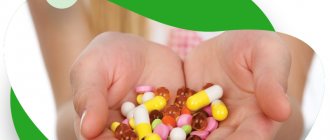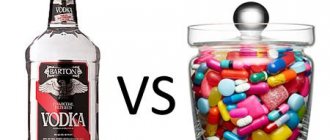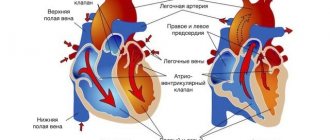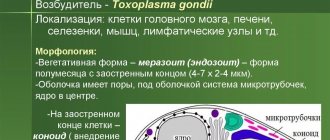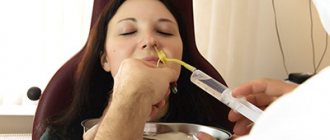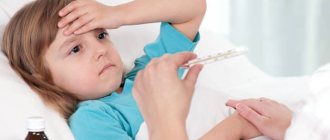From this article you will learn:
- ceftriaxone injections for sinusitis,
- instructions for use, why it may not help,
- causes of diarrhea after taking antibiotics.
The article was written by a doctor with experience in maxillofacial surgery.
Antibiotics for sinusitis (sinusitis) are prescribed taking into account the duration of the disease, the severity of clinical symptoms, as well as the sensitivity of typical pathogens of this disease to various groups of antibiotics. The most effective antibiotics for sinusitis in adults are β-lactam lactamase-protected synthetic penicillins (for example, drugs based on amoxicillin and clavulanic acid), as well as III-IV generation cephalosporins, modern fluoroquinolones, and in some cases also macrolides.
Many people treat sinusitis with ceftriaxone, which is a third generation cephalosporin and is intended for parenteral administration (IM or IV). This antibiotic is indeed one of the most effective drugs for the treatment of sinusitis (severe), but in some cases it is not the optimal choice and may even be ineffective. Therefore, below we will also tell you in what cases ceftriaxone does not help with sinusitis.
Different forms of sinusitis on CT -
The main thing when choosing an antibiotic is the sensitivity of typical pathogens to it, but with different forms of sinusitis, the composition of the pathogens is different. For example, in acute forms of sinusitis, anaerobes are sown in only about 10% of cases, while in chronic rhinogenic sinusitis - up to 48% of cases, and in any form of sinusitis of odontogenic origin (associated with foci of inflammation at the apexes of the roots of the 5-6-7 upper teeth) – anaerobic infection will already significantly predominate in the sinus.
The following forms of the disease are distinguished:
- acute sinusitis (duration less than 3 months),
- acute recurrent sinusitis (2-4 cases of acute sinusitis during the year),
- chronic sinusitis (more than 3 months),
- exacerbation of chronic sinusitis.
Composition of microflora in the sinus –
In acute forms of sinusitis, the main pathogens are considered to be Streptococcus pneumoniae (St.pneumoniae) and Haemophilus influenzae (H.influenzae), less often - Moraxella catarrhalis, Streptococcus pyogenes, Staphylococcus aureus, as well as anaerobes. Sometimes intracellular pathogens can also occur, for example, Micoplasma pneumoniae and Chlamydia pneumoniae.
If the development of acute sinusitis occurs during ARVI, then, accordingly, viral infection of the sinus will be primary. Viruses, so to speak, “pave the way” for a bacterial infection, which usually appears already on the 3-4th day of the disease. Accordingly, in case of acute sinusitis (acute rhinosinusitis) of a viral nature, antibiotics will not be indicated in the first 3 days.
Composition of microflora in acute sinusitis –
In chronic sinusitis of rhinogenic origin, the number of anaerobes increases. If in acute forms of anaerobes there is about 10%, then in chronic rhinogenic sinusitis they are already sown (according to different authors) - from 20 to 48% of all cases. First of all, these are Prevotella spp., Fusobacterium spp, Bacteroides spp, anaerobic streptococci and others. But among aerobic pathogens in chronic rhinogenic sinusitis, Streptococcus spp, Haemophilus influenzae, Prevotella aeruginosa, Staphylococcus aureus, Moraxella catarrhalis are sown.
If we talk about sinusitis of odontogenic origin, then in almost all cases they are primarily chronic. Here, anaerobes will predominate to an even greater extent (about 68% of all cases of odontogenic sinusitis) - primarily Bacteroides and Fusobacterium, as well as Peptostreptococcus spp.. Among aerobic microorganisms in odontogenic sinusitis, Staphylococcus haemolyticus and Staphylococcus auricularis are sown primarily. Also, in approximately 50% of cases, fungi of the genus Candida are also sown.
→ Composition of microflora in odontogenic sinusitis
Antibiotics for the treatment of sinusitis
An ENT doctor uses the following groups of antibacterial drugs:
- Penicillins. The drugs are well tolerated and do not cause side effects. They affect most pathogenic microorganisms, so they are used most often. Basically, penicillins are prescribed to adults in the form of tablets, and to children of the younger age group in the form of a suspension.
- Macrolides. Second-line drugs for the treatment of inflammation of the maxillary sinuses are prescribed for intolerance or ineffectiveness of penicillins. Their main effect is to stop the synthesis of new pathogens. The advantage of these medications is a single daily dose, therefore they are used to treat chronic sinusitis.
- Cephalosporins. The choice in their favor is made in advanced forms of sinusitis with the likelihood of complications. Mainly used in the form of intravenous or intramuscular injections, less often orally.
- Fluoroquinolones. Prescribed only to adults with purulent bacterial sinusitis as a local remedy. They have a number of side effects and are therefore contraindicated for children and adolescents.
Otorhinolaryngologists, when treating children under three years of age, prefer penicillins. They are relatively safe, effective against many pathogens, and are also available in the form of suspensions and powders.
To determine which group of antibiotics is effective for sinusitis, the doctor gives a referral for bacterial culture of nasal discharge. Often, patients seek medical help when their sinusitis is complicated, both sinuses are infected and the condition is critical. In this case, broad-spectrum antibiotics are prescribed. The first improvements are noticeable on the second day of treatment.
Ceftriaxone for sinusitis: dosage, how many days
The antibiotic Ceftriaxone is a third-generation cephalosporin. High quality ceftriaxone preparations are definitely Rocephin (Hoffman La Roche) and Lendacin (Lek). These are quite expensive drugs. For example, a package of Lendatsin 10 bottles of 1 g (which corresponds to 1000 mg) will cost from 1900 to 2300 rubles. But in this case, you should not opt for cheap Russian generics, which cost 30-40 rubles per 1 g bottle. Believe me, the difference in effectiveness, as well as the risks of developing antibiotic-associated diarrhea, is simply huge.
Let's figure out how to take Ceftriaxone for sinusitis. This drug can only be used parenterally (ie, either intramuscularly or intravenously). It is prescribed only for severe acute sinusitis or exacerbation of chronic sinusitis, but in some cases it can be prescribed for moderate-severe forms. The standard dosage of ceftriaxone for sinusitis in adults and children over 12 years of age is 2 g once a day (in the absence of a threat of complications and the absence of immunodeficiency states).
How many days an adult should be injected with Ceftriaxone for sinusitis will depend on the severity of the disease. If we are talking about a moderate form of sinusitis, then injections are usually given intramuscularly for 3 days (after which the effectiveness of antibiotic therapy is determined) and then the patient is transferred to taking a similar antibiotic only orally (in tablets). In total, antibiotic therapy for a moderate form of acute sinusitis usually lasts 7-8 days, but if we are not talking about an acute form of sinusitis, but about an exacerbation of chronic sinusitis, sometimes up to 14 days.
In severe cases of sinusitis, the drug is optimally administered intravenously. The standard daily dosage is still 2 g, but in case of a threat of complications, in the presence of severe concomitant pathology, immunodeficiency conditions - the dosage can be increased to 4 g, but in this case this dosage is divided into 2 doses (intravenous infusions over 30 minutes) - with an interval of 12 hours. The total duration of antibiotic therapy for severe forms of acute sinusitis is usually 10 days, sometimes up to 14 days.
But again, if we are not talking about an acute form of sinusitis, but about a severe form of exacerbation of chronic sinusitis, the duration of taking antibiotics can be up to 3 weeks. Moreover, in all of the above cases, it is still optimal to use the so-called “stepped antibiotic therapy”, when after a period of intramuscular or intravenous administration the patient is transferred to oral administration of a similar drug (with a similar spectrum of antibacterial activity).
In what cases does ceftriaxone not help with sinusitis?
Regarding the choice of cephalosporins, it must be taken into account that in some cases (according to different authors, from 8 to 20%), sinusitis can be caused by intracellular pathogens, for example, Micoplasma pneumoniae and Chlamydia pneumoniae. In this case, cephalosporins (ceftriaxone in particular) will be ineffective.
In addition, if the patient has been treated with III-IV generation cephalosporins in the past, then there is a risk of developing resistance to them in anaerobic flora (especially Bacteroides and Fusobacterium). This is especially true for patients who have been self-medicating for a long time, as well as patients with chronic sinusitis of odontogenic origin, in which the source of sinus infection is inflammatory foci at the apexes of the roots of the lateral teeth of the upper jaw.
According to statistics, rhinogenic sinusitis accounts for about 62% of all cases, odontogenic - at least 32%. Plus, there are patients who have a combined infection of the sinuses (both from the nasal passages and from the apexes of the roots of the teeth) - the presence of such mixed flora in the sinus significantly increases its resistance to antibacterial therapy. In addition, almost all odontogenic sinusitis immediately has a primarily chronic nature of the development of inflammation, and very often ENT doctors mistake an exacerbation of chronic odontogenic sinusitis for “acute” or “acute recurrent” sinusitis of rhinogenic origin.
This leads to the fact that the source of infection of the sinus (lateral teeth of the upper jaw) is preserved, and the patient has been treated for years for supposedly acute recurrent sinusitis of rhinogenic origin, respectively, without success. Regular use of antibiotics in this case leads only to temporary improvement, but does not allow for complete eradication of pathogens from the sinus. It also contributes to the development of antibiotic resistance in Bacteroides, Fusobacterium, Peptostreptococcus, Staphylococcus haemolyticus.
Plus, it is worth considering that when treating patients with odontogenic sinusitis, in 55.8% of cases they are also infected with fungi of the genus Candida. Therefore, in chronic forms of sinusitis of odontogenic origin (purulent, polypous and purulent-polypous forms), it would also be optimal to prescribe a drug from the ANTIMYCOT group.
Species resistant to ceftriaxone –
- all methicillin-resistant strains of Staphylococcus aureus,
- gram-positive aerobes: Enterococcus spp., Listeria monocytogenes,
- gram-negative aerobes: Acinetobacter baumannii, Pseudomonas aeruginosa, Stenotrophomonas maltophilia,
- others: Chlamydia spp., Mycoplasma spp., Legionella spp., Ureaplasma urealyticum, Clostridium difficile.
Species that can become resistant to ceftriaxone –
- Anaerobes: Bacteroides spp., Fusobacterium spp., Peptostreptococcus spp., Clostridium perfringens.
- gram-positive aerobes: Staphylococcus epidermidisb, Staphylococcus haemolyticusb, Staphylococcus hominisb,
- gram-negative aerobes: Citrobacter freundii, Enterobacter aerogenes, Enterobacter cloacae, Escherichia colic, Klebsiella pneumoniaec, Klebsiella oxytocac, Morganella morganii, Proteus vulgaris, Serratia marcescens.
Summary: The antibiotic Ceftriaxone works best for rhinogenic sinusitis, but not for odontogenic sinusitis. It may not be the optimal choice if the patient has been self-medicating for a long time (uncontrolledly taking antibiotics without a doctor’s prescription), or has repeatedly taken courses of antibiotic therapy with cephalosporins in the past.
What to do if a patient has odontogenic sinusitis -
In case of odontogenic infection of the sinus, it will not be enough to limit yourself to just prescribing a strong antibiotic, plus rinsing the sinus with a Yamik sinus catheter. The fact is that in this case we will have a focus of inflammation at the apex of the roots of one of the 5-6-7 teeth, which is associated with the presence of infection in the root canals of the causative tooth. Taking antibiotics does not allow root canals to be sanitized. Therefore, when inflammatory foci are detected at the apexes of the roots and poorly sealed root canals, sanitation of the root canals is necessary.
In this case, the causative tooth is opened, the root canals are disinfected, in which a calcium hydroxide-based preparation is left for up to 1-1.5 months. If this is not done, sinus infection will continue, and over time we will get new cases of exacerbation of chronic sinusitis. In some cases (due to the fact that the root canals are not perfectly filled in several teeth in the projection of the sinus) it is necessary to sanitize all the lateral teeth at once. We hope that our article: Ceftriaxone instructions for use for sinusitis was useful to you!
Sources:
1. Higher medical education of the author of the article, 2. Personal experience in maxillofacial surgery (including maxillary sinusitis), 2. “Acute sinusitis” (Shadyev, Izotova), 3. “Complex treatment of odontogenic maxillary sinusitis” (Shulman F.), 4. “Practical recommendations for antibacterial therapy of sinusitis” (Yanov, Ryazantsev, etc.), 5. “Clinical recommendations for the diagnosis and treatment of acute rhinosinusitis” (Lopatin, Svistushkin).
Reception features
Therapy with antibacterial drugs requires strict adherence to the doctor’s instructions. Do not exceed the dosage and frequency of administration, otherwise there may be a risk of side effects from the cardiovascular system, kidneys, liver, lungs, and gastrointestinal tract.
- The main treatment regimen boils down to taking systemic and local agents. Local antibiotics do not penetrate the bloodstream and therefore do not negatively affect the gastrointestinal tract. They enter through the mucous membrane into the sinuses, affect the source of inflammation and reduce its area. The following antibacterial agents are effective:
- Sprays and drops. For children under three years of age, the otolaryngologist prescribes drops; sprays are allowed from the age of 3.
- Suspensions. They are as effective as tablets. Used to treat sinusitis in children under 5 years of age.
- Solutions. Antibiotics are used during puncture of the maxillary sinus. The drug is injected directly into the sinus to kill pathogenic microflora at the site of inflammation.
- Tablets and capsules. The active substance is distributed through the bloodstream.
- Injections. They are prescribed rarely and only for complicated sinusitis. Penicillin injections are given every 4 hours, cephalosporins - 2 times a day.
The doctor determines the course of treatment individually. Along with local antibiotics, the ENT doctor selects vasoconstrictors and antiseptics to facilitate the passage of mucus and cleanse the nasal cavity.
Causes of sinusitis
A bacterial infection that often occurs as a complication of a viral infection. It is caused by various bacteria (pneumococci, streptococci, staphylococci). Possibly viral sinusitis (caused by influenza viruses, parainfluenza, adenoviruses) and fungal ones. Sinusitis is often preceded by acute respiratory infections, severe nosebleeds, dental disease, and swimming in contaminated water. Infection in the sinuses can enter through the nose, through the blood. In some cases, sinusitis can occur due to allergic reactions.
Why does sinusitis appear?
There are many causes of inflammation in the nose, the main ones are:
- The appearance of tumors or polyps in the nasopharynx or sinuses
- Deterioration of the immune system
- The presence of serious injuries to the facial skeleton
- Chronic malformations of the sinuses and nose
However, the main cause of the disease is considered to be the presence of various infections in the nasopharynx. They enter the sinuses through other sources of inflammation. Sometimes sinusitis occurs due to tooth inflammation. In medical practice, such a case is called odontogenic. The roots of some teeth (sixes) of the upper jaw can enter the maxillary sinus. It is believed that this phenomenon is a feature of the body, and not a pathology.
Inflammation can also be caused by streptococci, fungal infections or staphylococci, as well as mycoplasma or chlamydia.
Symptoms of sinusitis
Watery nasal discharge by itself does not mean a sinus infection. However, sinusitis can be suspected if a runny nose lasts more than a week and is accompanied by the following symptoms:
- thick, yellow-green nasal discharge;
- pain in the sinuses, which intensifies when bending or straining the facial muscles;
- runny nose accompanied by sore throat and cough;
- toothache;
- headache.
It is recommended to consult a doctor
- runny nose does not go away after self-medication for 7 days;
- the condition worsens after 3 days of self-medication, temperature above 38 degrees;
- have had sinusitis before;
- pain in the eyes, blurred vision, redness on the face around the eyes
Is it possible to cure sinusitis at home?
Self-medication is considered the most ineffective method of therapy. It can slow down the healing process or cause a number of complications. You can carry out related procedures at home, for example, inhalation. Warming and inhalation can be done independently at home by breathing over a pot of potatoes, covering yourself with a blanket, or applying a hot boiled egg to the area near the nose.
For patients recovering from sinusitis, speleotherapy is useful - treatment with air from karst or salt mines, caves: there are no microorganisms in such air, it is saturated with carbon dioxide.
You can try various accompanying measures, but the treatment strategy itself is prescribed by your doctor. This is the key to a quick recovery without consequences.
Diagnosis of sinusitis using modern techniques
To confirm the diagnosis of sinusitis, the following types of examination are used:
- Video endoscopy of the nasal cavity and nasopharynx to identify features of the anatomical structure and determine predisposing factors for the development of sinusitis;
- radiography of the paranasal sinuses;
- Ultrasound examination of the paranasal sinuses is a safe method with no contraindications, used to diagnose sinusitis and monitor the treatment process;
- CT, MRI - according to indications;
- laboratory diagnostics according to indications in full.
